WHEN Phil and Penny Henley decided to start farming emus, they hoped they were onto the next great thing in agriculture. The big native birds produced lean red meat, containing up to twice as much iron as beef, and valuable oil, reputed to have a huge range of medicinal benefits.
The eggs had both novelty and craft value, the leather was in demand for women’s fashions and even the feathers could be used to make dusters or crafts.
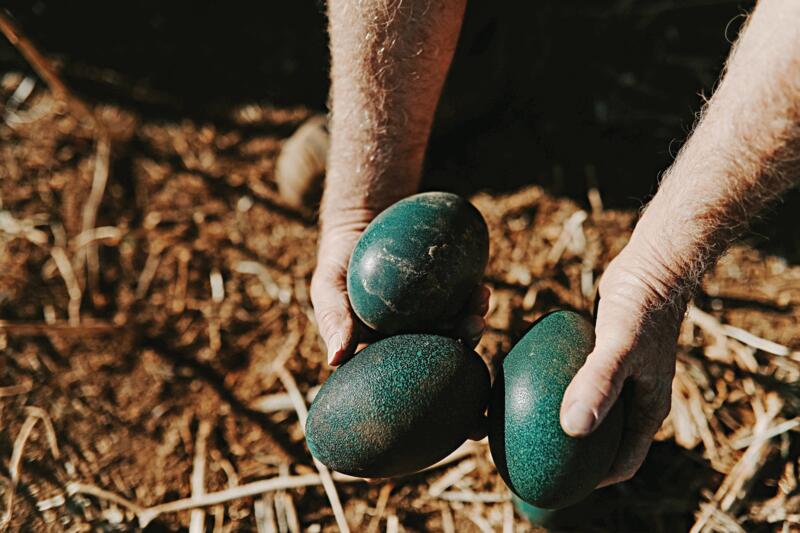 Phil finds a clutch of eggs in the paddock.
Phil finds a clutch of eggs in the paddock.
More than 20 years on, and with 900 emus running on about 100 hectares on their farm at Tooraweenah, 130km north of Dubbo, Phil remains optimistic they made a good decision. However, he admits:
“We probably didn’t do as much research as we should have. If we’d known it would take so long to get to this spot, I’m not sure we’d have ever started.”
RELATED: Wool prices are booming, so why is there a shortage of shearers?
The past 12 months have probably been his most profitable, he says. So many other emu farmers have given up, it’s resulted in a shortage of emu oil. That means the bulk drums Phil has been hanging onto, refusing to sell oil for less than it cost to process, are suddenly in big demand by manufacturers and he’s getting decent money.
While it’s been hard to sell the meat, and it’s mainly been dumped or used for pet food, the couple’s daughter Nicole and her husband Dan Harte have set up a system to turn it into jerky.
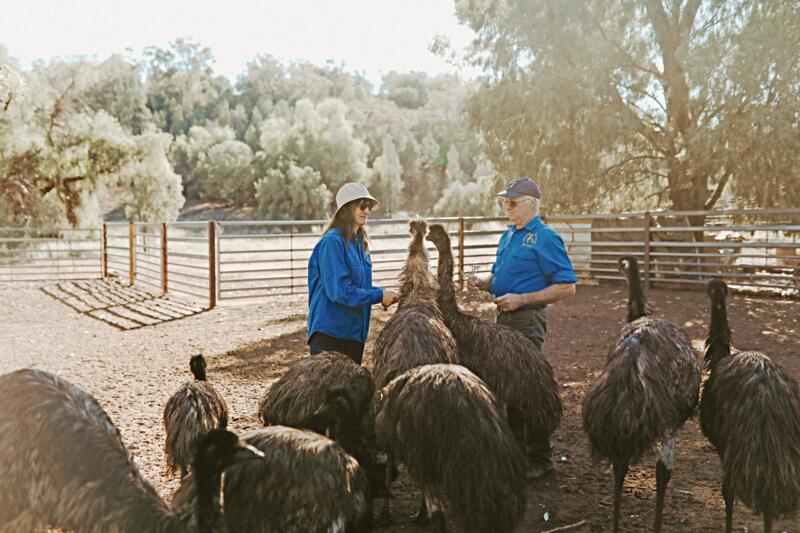 Penny and Phil Henley offer young emus a treat.
Penny and Phil Henley offer young emus a treat.
Nicole’s sideline of bagging up the feathers to sell to craft makers has also been an unlikely bestseller and she’s struggling to keep up with demand. Equally popular are the lip balms and leather and furniture wax she’s taught herself to make, along with emu-feather fascinators, dream catchers and jewellery.
RELATED ARTICLES:
The buffalo farmers bucking tradition with cheese
View to the future: Byron Bay dairy diversifies into farm tourism
Industrious beekeepers nurture thriving family business
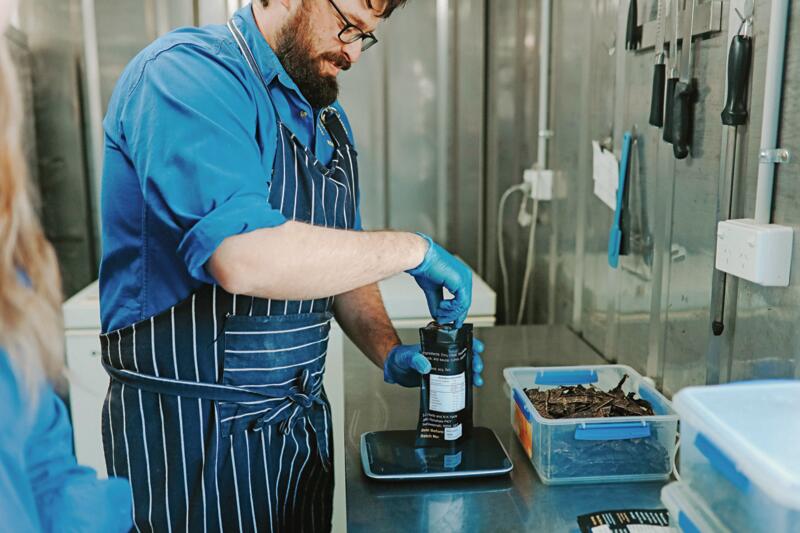 Dan packaging emu jerky.
Science key to unlocking emu market potential
Dan packaging emu jerky.
Science key to unlocking emu market potential
Meanwhile, Phil hopes an investment into scientific research into the oil will reap dividends and, going forward, he won’t have to rely solely on anecdotal evidence to sell its benefits.
Phil is one of a number of farmers who, in the 1990s, took advantage of new laws making it legal to farm emus in NSW. Because emus are a protected animal, a special licence was necessary from the state’s environment department. Farmers had to take on a minimum of 50 pairs of emus within 12 months and comply with space and fencing regulations.
Phil was already running livestock on his property at the foot of the Warrumbungles, so had plenty of fenced land. He sourced some of the birds from Taronga Western Plains Zoo Dubbo, others from local farmers, and more emus from Victoria and Western Australia.
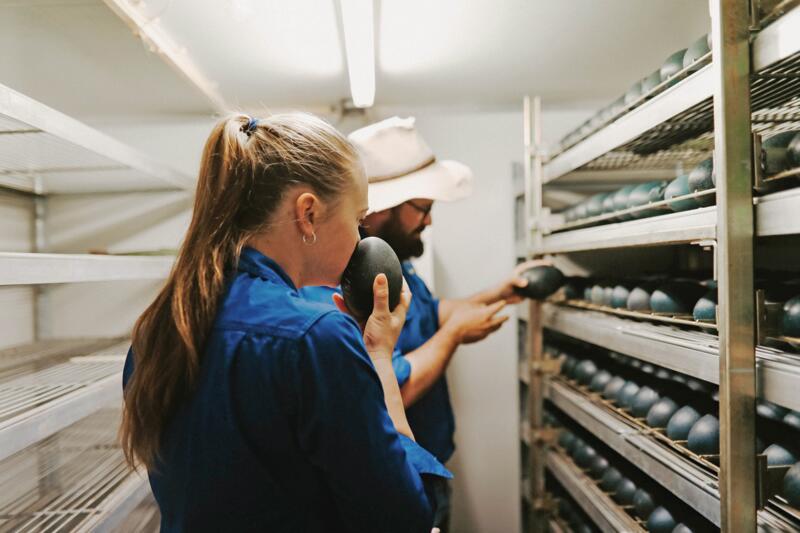 Penny and Phil’s daughter Nicole Harte and husband Dan perform a “sniff test” to ensure there are no rotten eggs in the incubator.
Penny and Phil’s daughter Nicole Harte and husband Dan perform a “sniff test” to ensure there are no rotten eggs in the incubator.
His main investment was a large incubator. With the United States already enthusiastically farming emus – in the 1990s it was touted in America as the next big red meat – he sought advice on how to hatch and care for the chicks and he was away.
“Adult emus pretty well know how to look after themselves and we found they weren’t really that hard to farm.”
They were also good breeders; a pair of emus can produce up to 25 chicks a year. Phil’s plan to breed and turn over 400 to 500 emus a year soon came to fruition.
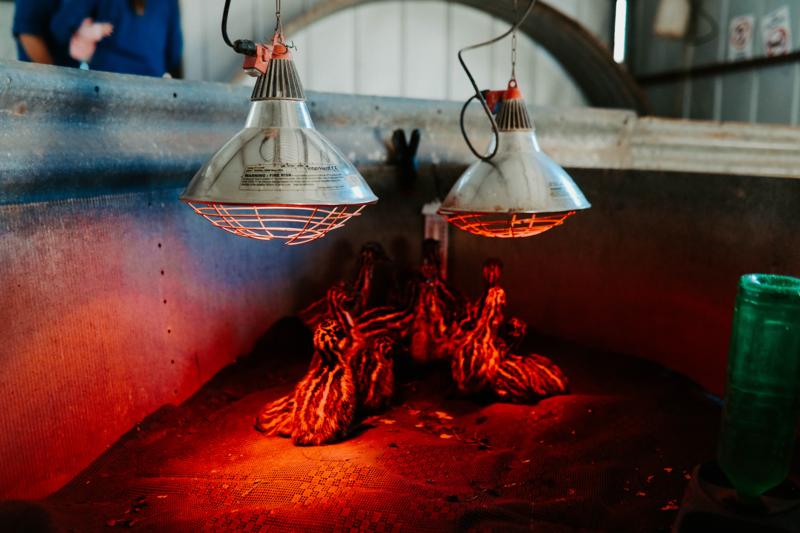
The family designed their own bottles and packaging and bought a machine to decant the oil from the 20-litre drums sent back from their processors. They sold it at farmers’ markets and field days and set up farm and online shops. Unfortunately, like other emu farmers, they couldn’t get the public interested fast enough, and demand didn’t match supply. “It was a new industry that had few established markets,” Phil says.
RELATED: Beef farmers create innovative market for bone broth
How to effectively market emu oil to the Australian public
Australians have never been keen on eating their coat of arms and while a few restaurants were interested, they wanted fresh meat. Emus have to be seasonally processed because they put their valuable fat on just before the breeding season.
Add to that the fact the birds are expensive to cart because they need so much room in a truck and it’s not surprising most investors sold up. Phil’s Emu Logic farm is now one of a handful left in NSW.
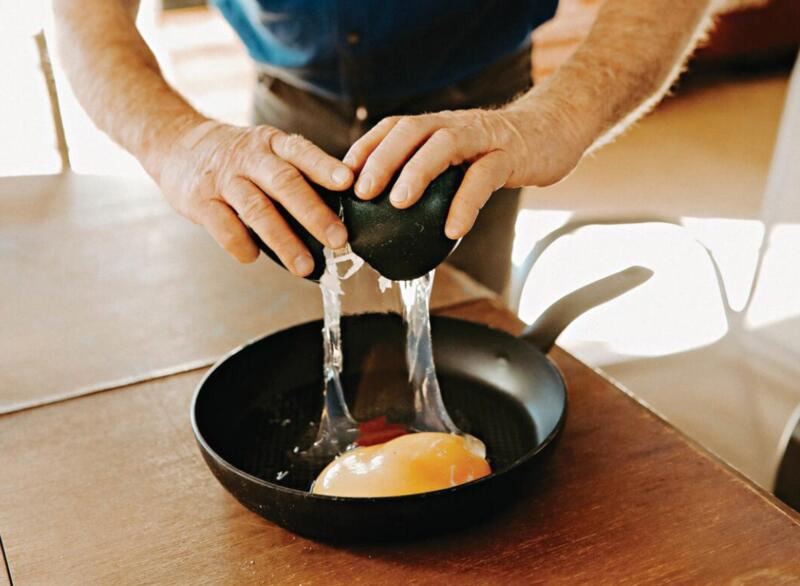 Phil demonstrates the size of the emu egg yolk.
Phil demonstrates the size of the emu egg yolk.
So why did he hang on? Because of the feedback from customers, he explains. At farmers’ markets, Phil has watched people rub his emu oil on arthritic fingers and move them for the first time in years.
RELATED ARTICLES:
From fleece to farmed meat: how alpaca farmers are owning their niche
Bucking tradition breeds innovation for Merino sheep farmer
“We’ve had people literally telling us it’s enabled them to walk again. Even an arthritic old dog will be running around again if you give it a bit of emu oil. When people tell you it’s changed their lives, you think, well something’s working. We’ll hang in a bit longer,” says Phil.
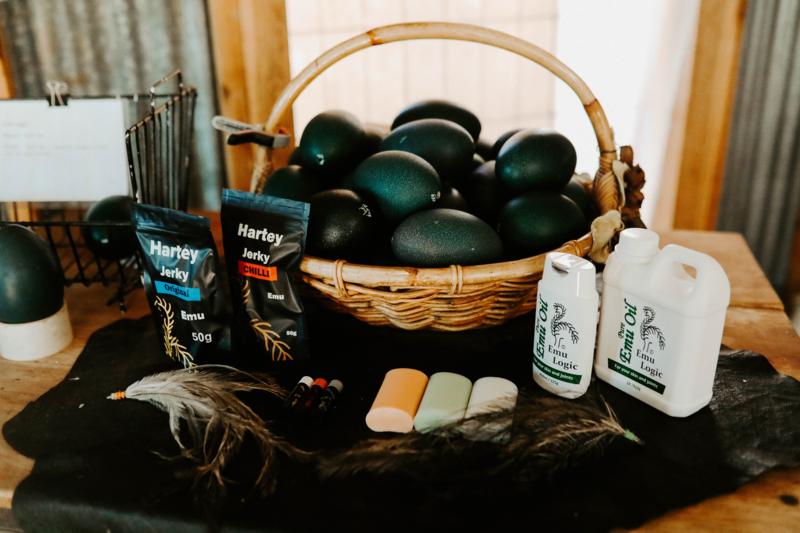 A selection of farm products including jerky, blown-out eggs, oil, soap and feathers ready for sale.
A selection of farm products including jerky, blown-out eggs, oil, soap and feathers ready for sale.
There’s also national pride at stake. If anyone is going to reap the rewards of emu oil, it should be Australia. While Indigenous people have long used it as a skin wound treatment and pain reliever, Phil decided to try to get scientific backing for the benefits of emu oil.
RELATED: Kangaroos: Pest or marketing opportunity?
“We’re funding the research at Charles Sturt University [in Dubbo], going dollar for dollar with a government grant,” he says.
“Initially we just want the oil properly analysed and to work out the difference between male and female oil as they have different types of fat on them. We want to know if seasons and feeds make any difference and through that we can hopefully move on to some medical research.”
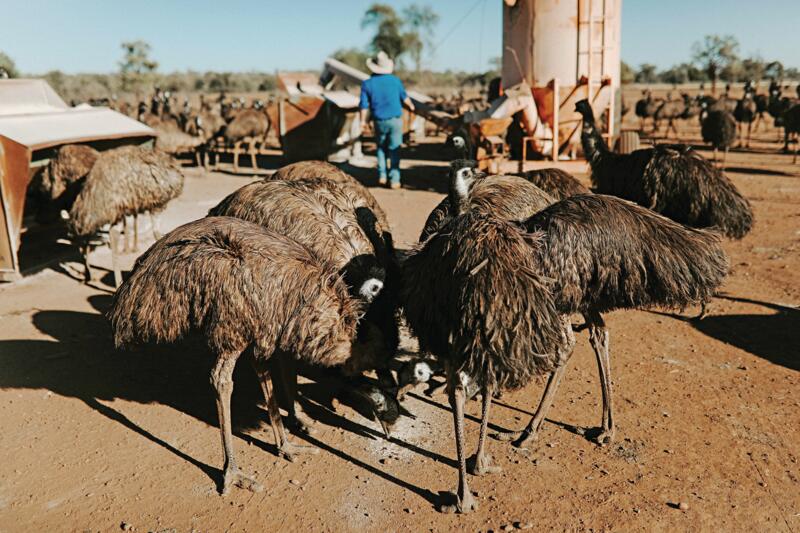 Emus gobble up a spillage of feed en route to the feeder.
Emus gobble up a spillage of feed en route to the feeder.
While he waits for the research results, Phil has found demand for his emu products boosted by another unexpected source – film crews. Wildlife programs and documentary makers regularly visit. Scenes for the 2018 film Emu Runner were shot on the farm and a TV weather forecast broadcast from the farm earlier this year for the Sunrise breakfast show resulted in an almost immediate flurry of online orders.
RELATED: Switching from Merinos to goats proves profitable in far west NSW
In addition, the farm is open to the public and school groups who come for an insight into agriculture. Less welcome visitors were the activists who let the emus out. Fortunately for the birds, since drought conditions meant they would have starved, the mob went for a bit of a run and then came back to where they felt secure and were fed and watered.
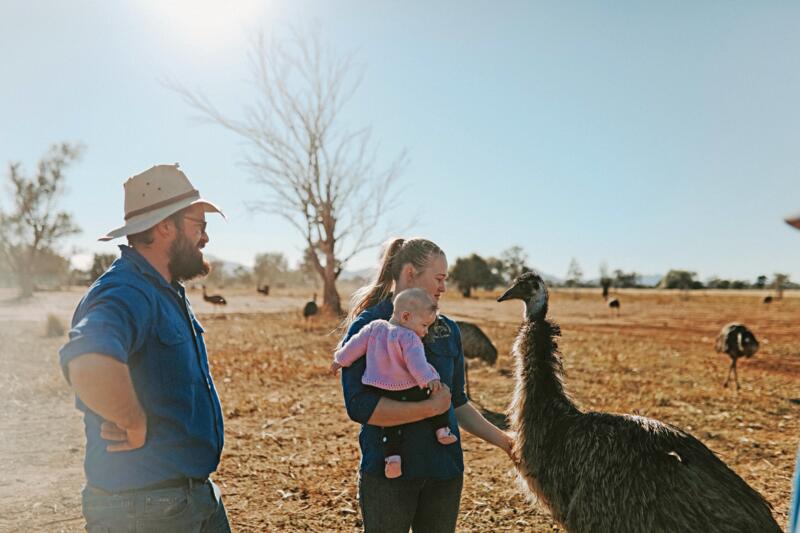 Dan and Nicole introduce baby Thea to the birds.
Dan and Nicole introduce baby Thea to the birds.
The benefits of emu oil
- The oil is extracted from the bird’s fat deposits and well-fed emus produce more oil. An adult emu weighs about 45kg of which about 10kg is body fat, stored on its back.
- Male emus take care of the eggs during the incubation period and don’t eat or drink for nearly two months, living off their fat stores while sitting on the nest. This may be why emu oil evolved such potent qualities.
- Research from the University of Adelaide shows emu oil has anti-inflammatory properties and the ability to help repair damage to the bowel caused by ulcerative colitis and chemotherapy.
- Another Adelaide study suggests emu oil could be useful in preventing chemotherapy-induced bone loss, while an American laboratory finds the oil is high in vitamin K2 (MK-4), believed to have heart and bone health benefits, and a potential role in cancer prevention.
Emu egg facts
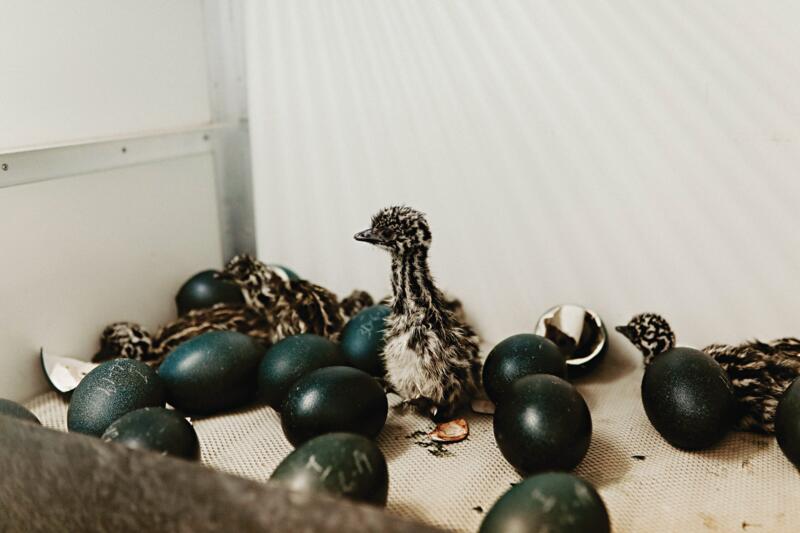 Emu chicks fresh out of their eggs in the hatcher.
Emu chicks fresh out of their eggs in the hatcher.
- 56 days taken to hatch – 35 days longer than a chicken’s egg.
- 9-10 times bigger than a chicken’s egg.
- 18 years is the retirement egg-laying age for a female emu.
- 6-11 eggs are laid in each clutch during the winter laying season.
- 3 days taken for the female to produce each egg in the clutch.
Sources: Emu Logic, Australia Zoo